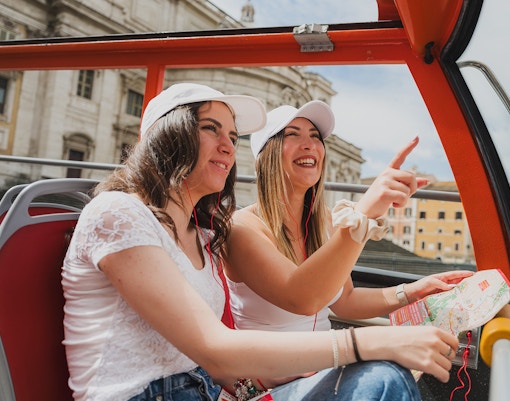Discover Iconic Landmarks and Local Haunts of Rome in Three Days
Day 1 - Art meets faith!
Start the day at Rome Termini with a healthy dose of an authentic Italian breakfast of cornetto & biscotti, along with a smooth coffee, to keep energy high. Then take the Hop-on Hop-off bus from the Termini stop straight to Vatican City, the heart of the Catholic Church.
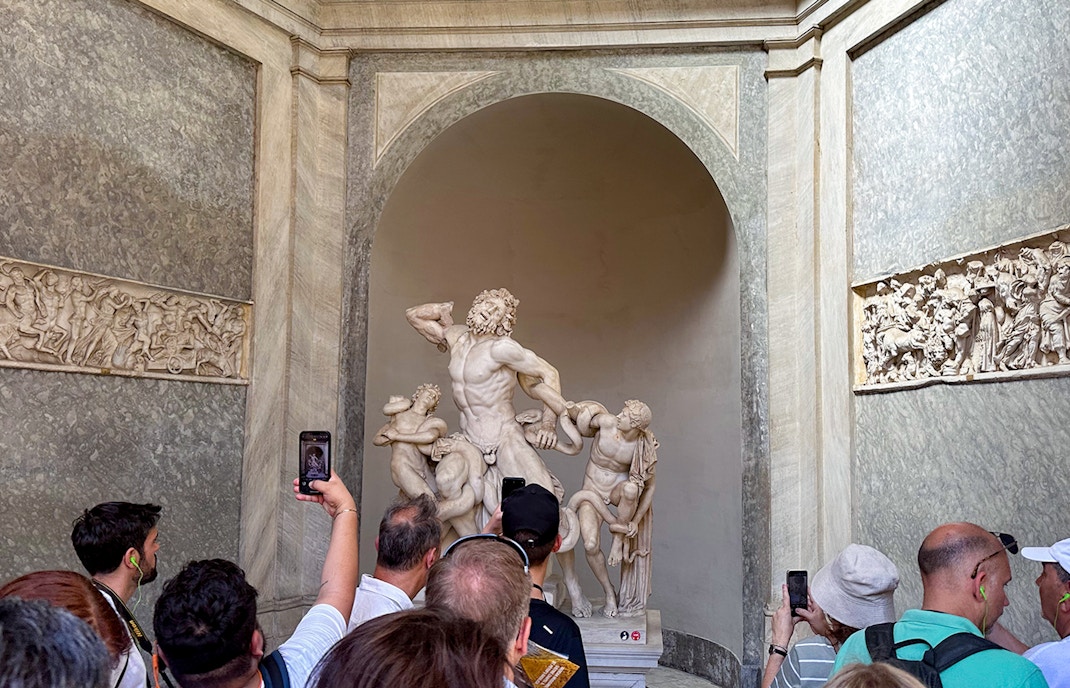
Vatican Museums & Sistine Chapel
- Nearest Hop-on Hop-off bus stop: Vatican (Big Bus), Vatican (City Sightseeing), Vatican City (Green Line), Vatican City Sistine Chapel & Castel Sant'Angelo (I Love Rome), Castel Sant’Angelo (Rome Hop-on Hop-off Boat)
A collection unlike any other, the Vatican Museums were commissioned in the 16th century by Pope Julius II. Consisting of 54 themed galleries, housing artworks by Raphael and Caravaggio and even Egyptian artifacts, the museums culminate in the Sistine Chapel, popular for the ‘Creation of Adam’ fresco by Michelangelo.
- Average time to spend: 3 hours
- Opening hours: 8am to 7pm (opening hours vary with seasons)
- Closed on: The first 3 Sundays of each month
- Pro-tip: Invest in skip-the-line tickets and Guided Tours to truly enhance your museum experience.
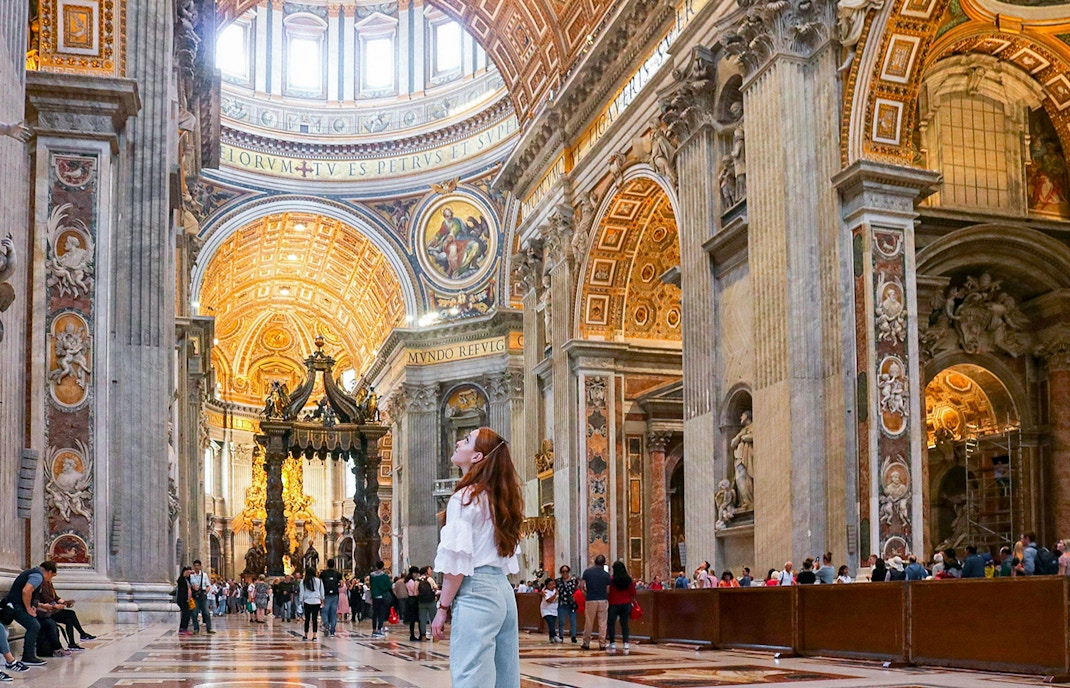
St. Peter's Basilica
- Nearest Hop-on Hop-off bus stop: Vatican (Big Bus), Vatican (City Sightseeing), Vatican City (Green Line), Vatican City Sistine Chapel & Castel Sant'Angelo (I Love Rome), Castel Sant’Angelo (Rome Hop-on Hop-off Boat)
At the center of the Vatican lies one of the world’s largest churches - St. Peter’s Basilica. Not only does it hold immense religious significance, it is also a treasure trove of Renaissance and Baroque art. Inside you will find Michelangelo’s Pieta, Bernini’s Chair of St. Peter and various other sculptures, frescoes, and paintings.
- Average time to spend: 2 hours
- Opening hours: 7am to 7pm (opening hours vary with seasons)
- Pro-tip: Don’t forget to head up to the Dome for expansive views of Rome.
You can sample restaurants like Il Segreto, Rione XIV Bistrot, Pastasciutta, and Bonci Pizzarium near the Vatican, or walk along the Tiber River, past the mighty Castel Sant’ Angelo. We recommend the latter for a more picturesque setting.
St. Peter's Basilica tickets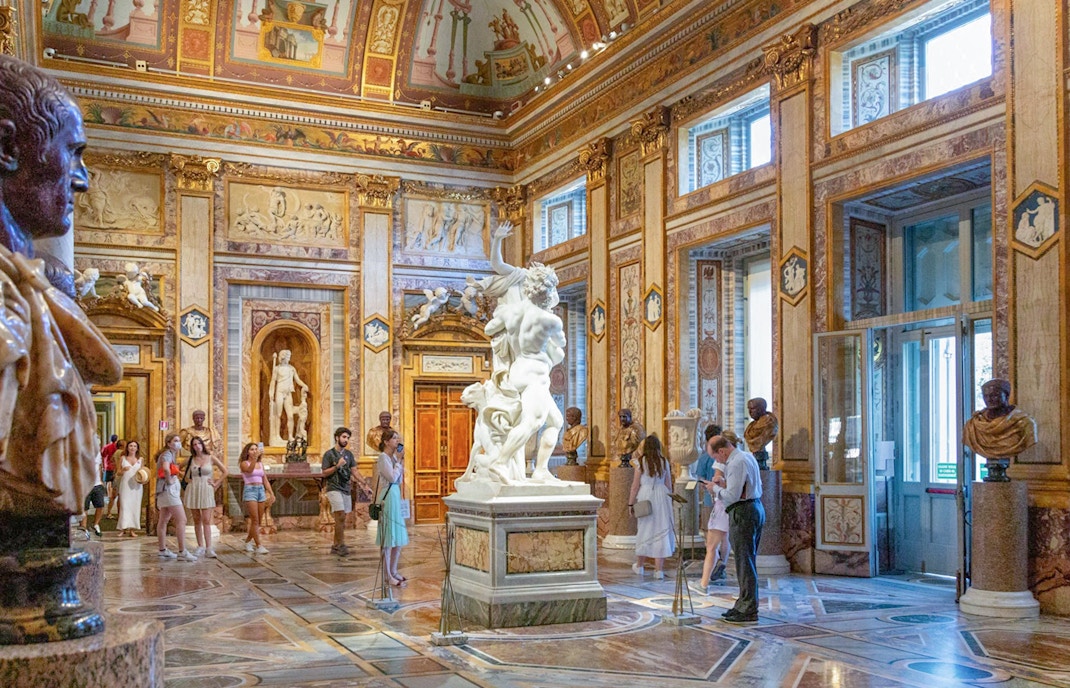
Borghese Gallery
- Nearest Hop-on Hop-off bus stop: Ludovisi/Spanish Steps (Big Bus), Piazza Spagna (City Sightseeing), Villa Borghese (Green Line), Spanish Steps (I Love Rome), Popolo Square (Rome Hop-on Hop-off Boat)
The Borghese Gallery is situated at the heart of the expansive Villa Borghese park. Visitors typically spend about 2 hours exploring the magnificent artwork by Caravaggio, Bernini, Canova, and Raphael. However, if you’ve had your fill of art for the day, just relax in the beautifully landscaped gardens, which are free to visit.
- Average time to spend: 1.5 to 2 hours
- Opening hours: 9am to 7pm
- Closed on: Mondays, January 1 and December 25
- Pro-tip: Given the attraction’s popularity, book skip-the-line tickets to avoid long waiting hours.
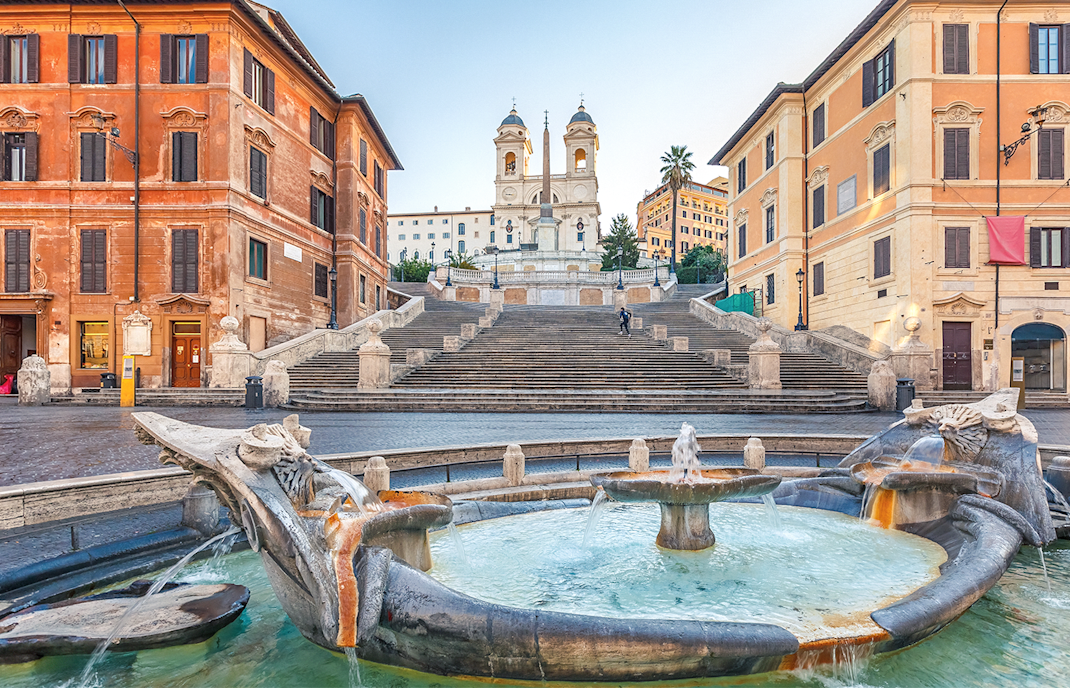
Via Condotti & Spanish Steps
- Nearest Hop-on Hop-off bus stop: Ludovisi/Spanish Steps (Big Bus), Piazza di Spagna (City Sightseeing), Villa Borghese (Green Line), Spanish Steps (I Love Rome), Popolo Square (Rome Hop-on Hop-off Boat)
The iconic steps connecting the Piazza di Spagna and the Trinità dei Monti Church became a hit with tourists, ever since being featured in the Audrey Hepburn-starrer, Roman Holiday (1953). It is the perfect destination for soaking in Rome’s lively atmosphere, high-end shopping, and sunset views. The Steps also have a special connection with English Romanticism.
- Average time to spend: 1.5 hours
- Opening hours: Open 24/7
- Pro-tip: Do not sit on the Spanish Steps as much as you want that insta-worthy picture, as it will attract a big fine.
Ginger - Spagna, Angie’s Restaurant, Osteria Barberini, and Taverna Ripetta are some great eateries nearby. Alternatively, you can also grab dinner and drinks from the Piazza Navona, one of Rome’s most beautiful squares. The place lights up at night with a vibrant energy, street artists, and skillfully carved fountains.
Day 2 - Walking through time & exploring Rome’s ancient ruins
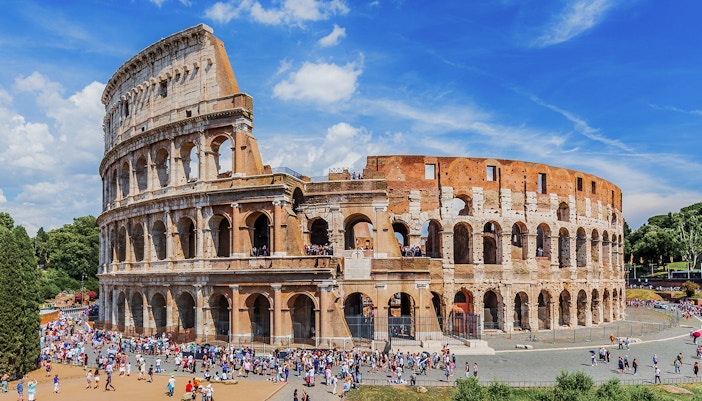
The Colosseum
- Nearest Hop-on Hop-off bus stop: Colosseum (Big Bus), Colosseo (City Sightseeing), Colosseum (Green Line), Colosseum Archaeological Area (I Love Rome), Isola Tiberina (Rome Hop-on Hop-off Boat)
A true testament to Roman engineering, your itinerary would be incomplete without visiting this colossal amphitheater. As you explore its elliptical structure, you are bound to visualize the epic gladiatorial combats, wild animal hunts, and elaborate public spectacles that were hosted here.
- Opening hours: 8:30am to 7:15pm (Closing time varies with seasons)
- Average time to spend: 1.5 to 2 hours
- Closed on: January 1 and December 25
- Pro-tip: Given the uneven surfaces, don’t forget to wear sturdy footwear and carry an umbrella/hat for protection from the sun.
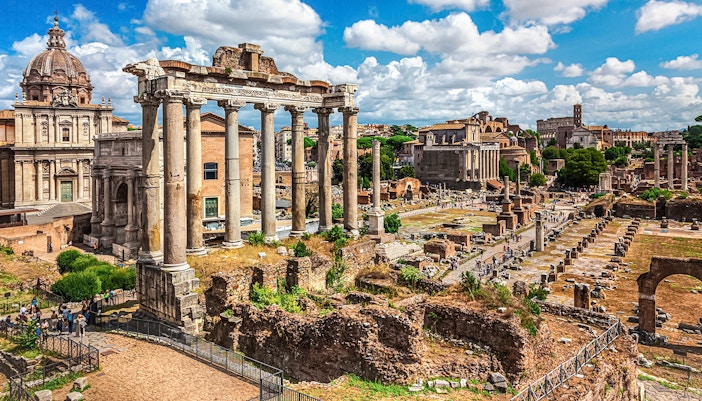
Roman Forum
- Nearest Hop-on Hop-off bus stop: Colosseum (Big Bus), Colosseo (City Sightseeing), Colosseum (Green Line), Colosseum Archaeological Area (I Love Rome), Isola Tiberina (Rome Hop-on Hop-off Boat)
Take a brisk walk from the Colosseum and visit the Roman Forum, a sprawling archaeological site that was once the epicenter of political, economic, and social activities. Walking through the Forum in this day and age, will make you appreciate the scale and complexity of Roman urban planning.
- Opening hours: 9am - 7:15pm (opening hours vary with seasons)
- Average time to spend: 2 hours
- Closed on: January 1 and December 25
- Pro-tip: The Forum can be complex to navigate. Carry a map or guidebook to help find key structures, such as the Temple of Saturn or the Arch of Titus.
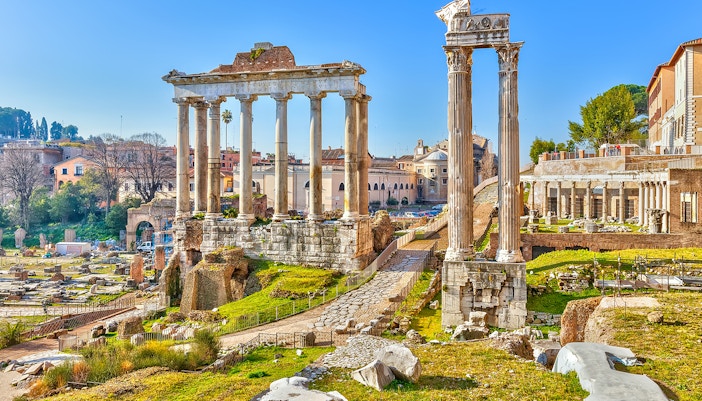
Palatine Hill
- Nearest Hop-on Hop-off bus stop: Colosseum (Big Bus), Colosseo (City Sightseeing), Colosseum (Green Line), Colosseum Archaeological Area (I Love Rome), Isola Tiberina (Rome Hop-on Hop-off Boat)
Often regarded as the birthplace of Rome, the hill boasts of breathtaking panoramic views of the city’s rooftops, churches and surrounding hills. Explore the ruins of ancient villas and temples nearby, with remnants of lush gardens and intricate mosaics.
- Opening hours: 8:30am - 7:15pm (closing time varies with seasons)
- Average time to spend: 2 hours
- Closed on: January 1 and December 25
- Pro-tip: Beat the crowds and take an early morning guided tour of The Colosseum, Roman Forum & Palatine Hill.
Boost your energy levels with La Taverna dei Fori Imperiali’s toasted Crostini, flavorful Cacio e Pepe, and classic Tiramisu. Alternatively, you can check out the various pizzerias, cafés, and gelaterias near the Roman baths for a leisurely lunch.
Palatine Hill tickets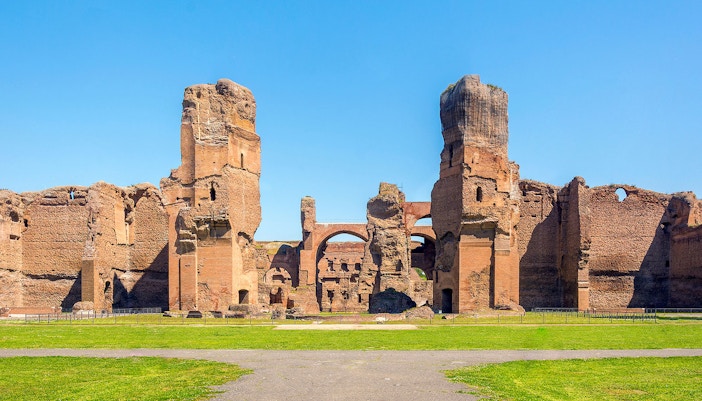
Baths of Caracalla
- Nearest Hop-on Hop-off bus stop: Baths of Caracalla (Big Bus), Colosseo (City Sightseeing), Colosseum (Green Line), Colosseum Archaeological Area (I Love Rome), Isola Tiberina (Rome Hop-on Hop-off Boat)
The Baths of Caracalla, also known as Terme di Caracalla, were built between 212 and 216 AD. You can still see the grandeur of the original structure, along with the massive vaulted ceilings and intricate mosaic floors, making it one of the most well-preserved examples of Rome’s public buildings.
- Average time to spend: 1 hour
- Opening hours: 9am to 7:15pm (opening hours vary with seasons)
- Closed on: January 1 and December 25
- Pro tip: Visit during the Golden Hour (around 10am or 4pm) to get some beautiful snapshots.
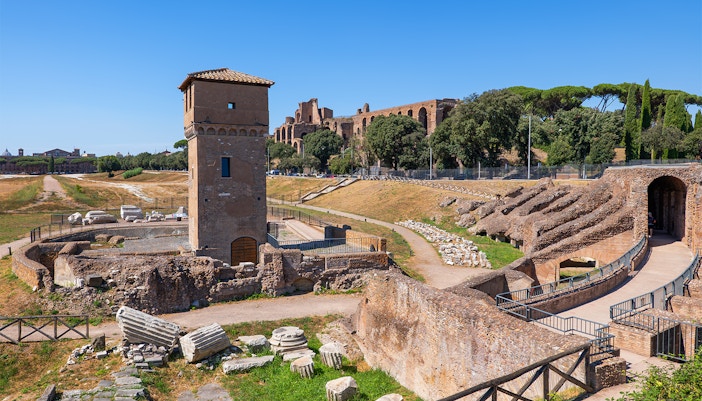
Circus Maximus
- Nearest Hop-on Hop-off bus stop: Circo Massimo (Big Bus), Colosseo (City Sightseeing), Colosseum (Green Line), Colosseum Archaeological Area (I Love Rome), Isola Tiberina (Rome Hop-on Hop-off Boat)
Built in the 6th century BC, this vast open-air arena could accommodate up to 250,000 spectators. It played host to thrilling chariot races, religious ceremonies, and grand public events for centuries.
- Average Time to Spend: 30 minutes to 1 hour
- Opening Hours: Open 24 hours
- Pro tip: Visit the Orange Garden (Giardino degli Aranci) nearby, to enjoy a sweeping view of the surrounding cityscape.
Alternatively, you can trot down to the vibrant neighborhood of Testaccio post your expedition to the Roman baths. Known for its authentic street food and thriving nightlife, this cultural hotspot allows you to experience Rome as a local. Don’t forget to take a riverside walk by the Tiber River.
Circus Maximus ticketsDay 3 - Hidden gems & unique experiences
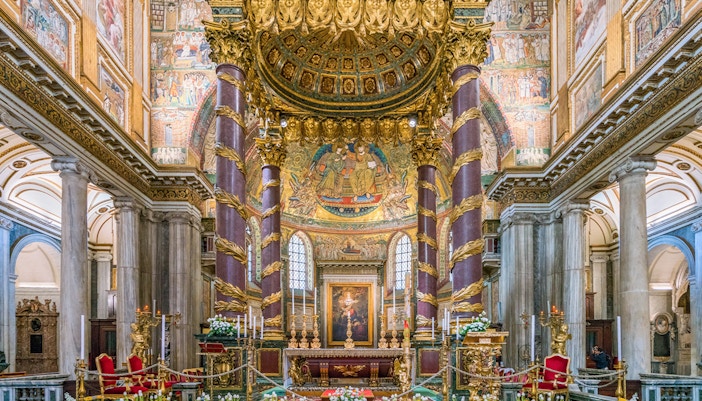
Basilica of Santa Maria Maggiore
- Nearest Hop-on Hop-off bus stop: Basilica di Santa Maria Maggiore (Big Bus), S.Maria Maggiore (City Sightseeing), Santa Maria Maggiore (Green Line), Santa Maria Maggiore (I Love Rome), Isola Tiberina (Rome Hop-on Hop-off Boat)
One of Rome’s major basilicas, the Basilica of Santa Maria Maggiore was founded in the 5th century. Start your day by soaking in the serene atmosphere and architectural grandeur at this spiritual haven. This historical monument is also known for housing the relics of the Holy Crib, believed to be from the manger of Jesus.
- Average time to spend: 30 minutes to 1 hour
- Opening hours: 7am to 7pm (last entry at 6:30pm)
- Pro tip: Avoid wearing shorts or sleeveless outfits as a sign of respect and to ensure you aren’t denied entry to the basilica.
Celebrated every 25 years, marking a special year of forgiveness, pilgrimage, and renewal of faith, participate in the Jubilee 2025. Find out more details here.
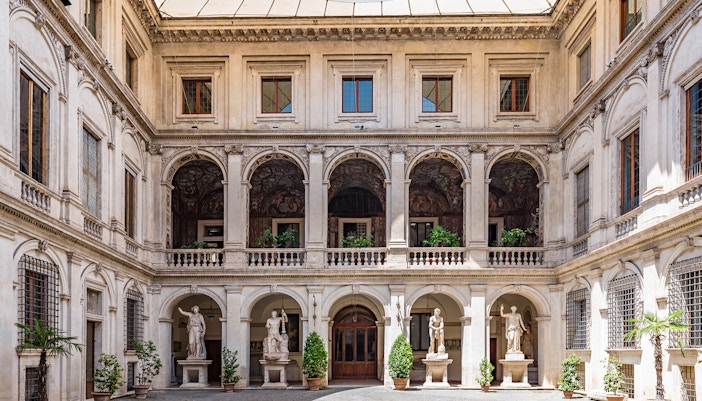
National Roman Museum
- Nearest Hop-on Hop-off bus stop: Basilica di Santa Maria Maggiore (Big Bus), S.Maria Maggiore (City Sightseeing), Santa Maria Maggiore (Green Line), Santa Maria Maggiore (I Love Rome), Isola Tiberina (Rome Hop-on Hop-off Boat)
Spread across the 4 distinct sites of the Palazzo Massimo, Palazzo Altemps, Crypta Balbi, and the Baths of Diocletian, the museum showcases an impressive array of sculptures, frescoes, mosaics, and artifacts. Each site presents a different facet of Roman history, from the imperial grandeur to the daily lives of ordinary citizens.
- Average time to spend: 1 to 2 hours
- Opening hours: 9:30am to 7pm (Tuesday - Sunday)
- Closed on: Mondays, January 1 and December 25
- Pro tip: Visit the Museum shop to find some unique mementos and Roman souvenirs.
Known for its exceptional bread and pastries, visit Panella, which is located near the basilica, for some refreshments. Their Cornetti (Italian croissants), Pane Casereccio (traditional bread), and Pizza Bianca come highly recommended.

Piazza Venezia & Altar of the Fatherland
- Nearest Hop-on Hop-off bus stop: Piazza Venezia (Big Bus), Piazza Venezia (City Sightseeing), Piazza Venezia (Green Line), Piazza Venezia (I Love Rome), Isola Tiberina (Rome Hop-on Hop-off Boat)
Piazza Venezia is a central and historic square that serves as the focal point of the Altare della Patria, an awe-inspiring monument dedicated to Victor Emmanuel II, the first king of unified Italy. You can explore its impressive Neoclassical architecture, intricate sculptures, and panoramic terrace.
- Average time to spend: 1 to 2 hours
- Opening hours: 9:30am to 7:30pm (last entry at 6:45pm)
- Closed on: January 1 and December 25
- Pro tip: Look for hidden details like the bas-reliefs depicting historical scenes, that add depth to the landmark’s grandeur.

Pantheon
- Nearest Hop-on Hop-off bus stop: Vatican (Big Bus), Vatican (City Sightseeing), Vatican City (Green Line), Vatican City Sistine Chapel & Castel Sant'Angelo (I Love Rome), Castel Sant’Angelo (Rome Hop-on Hop-off Boat)
Originally built as a temple to the Roman gods around 27-25 BC, its most striking feature is the vast dome, crowned by a central oculus that illuminates the interiors with natural light. With its grand Corinthian columns and perfect symmetry, it is one of Rome’s most iconic and well-preserved ancient monuments.
- Average time to spend: 1 to 2 hours
- Opening hours: 9am to 7pm (last entry at 6:30pm)
- Closed on: January 1, August 15, and December 25
- Pro tip: Look for notable tombs inside the Pantheon, including those of the artist Raphael and several renowned Italian kings.
There are many interesting options you could explore for lunch around the area like Enoteca Corsi (a charming, family-run spot), Gusto (modern Italian) or Roscioli Salumeria con Cucina (part deli/part restaurant). With your hearts and stomachs full, toss a coin at the Trevi Fountain nearby or marvel at the Baroque fountains at Piazza Navona.
Pantheon tickets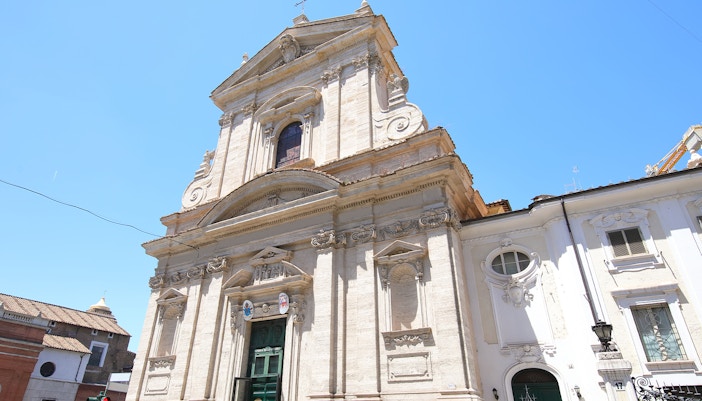
Santa Maria della Vittoria
- Nearest Hop-on Hop-off bus stop: Piazza Barberini/Spanish Steps (Big Bus), Piazza Barberini (City Sightseeing), Barberini Square (Green Line), Piazza Barberini and Trevi Fountain (I Love Rome), Popolo Square (Rome Hop-on Hop-off Boat)
Completed in 1620, this stunning church is renowned for housing Bernini’s Ecstasy of Saint Teresa, one of the most famous sculptures of the Baroque era. It was famously featured in the film Angels & Demons (2009), based on the book by Dan Brown.
- Average time to spend: 30 to 45 minutes
- Opening hours: 8:30am - 12pm; 4pm - 6pm (timings differ on Sundays & special occasions)
- Closed on: January 1, Easter Sunday and December 25
- Pro tip: Carry small change, as some parts of the church may require coins to illuminate the artwork. This involves inserting a coin into a slot machine that controls the lighting.
Post this you can enjoy a fun stroll to the majestic Piazza della Repubblica, enjoy dinner at a local trattoria and treat yourself to some of Rome’s finest gelato at La Romana.




